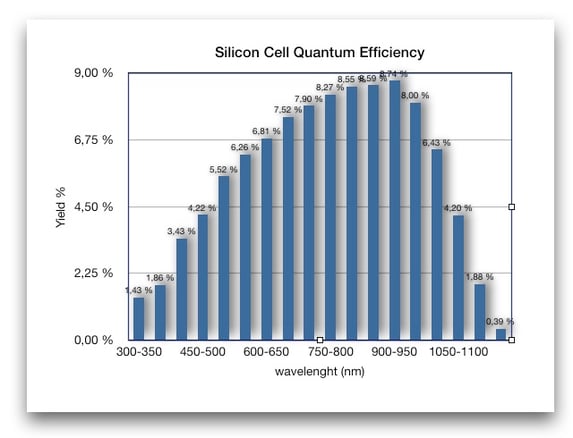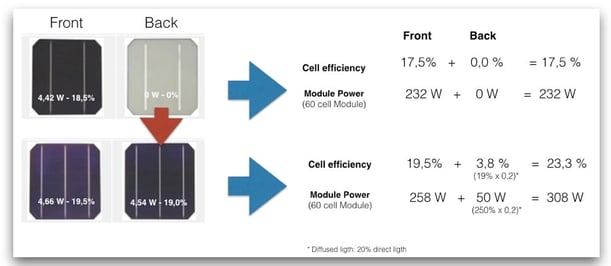Some dreams are the "engines" of the future.
But of course not all dreams work that way and end up being realities. In most of the cases they end to be .... "castles in the air". That is normally due to the fact that moving a dream into a reality it is not an easy task. These taks require strong decision, endless perseverance and mainly the good management of three general conditions.
To convert a dream into reality, the first condition to start with is to built a “solid ground”. And two more requirements need to be added to this one. First (or the second) is to use "good stuff", the best stuff around to built "the castle". All "raws" have to fit, be robust and consistent. And second (the third from the total), to use "the best hands" to place all together in the right way.
Going to the real world, photovoltaics bring a good example of a collective dream. To many people the possibility to live from the sun energy is one of their most wished dreams. To convert it into a reality a lot of technical people, from different disciplines, is engaged day by day to get something else in favor of the dream.
In general, and from the technical point of view, some of the challenges are: to get more and more from the solar panels every year, to make them last longer in time (years), to be able to collect and distribute the energy efficiently, and to make all of this economically possible. A lot of split work.
In this joint effort, each one of us is looking on how to provide something better and/new as its particular contribution. Let's look at some particular examples that came from silicon cells and encapsulants manufacturers.
Some cells manufacturers efforts....

-Some cell manufacturers are looking to find the way to increase the quantum efficiency of the cells. On their way they have to find answers to questions like:
What to do to raise by 10, 15 or 20% at each wavelength range? Is it possible to do it just in a selective wavelength ......?
How to increase the cells efficiency by increasing cells connectivity? What about to increase the cells connectivity? How to work out 4 or 6 bus-bars cells? What will be the improvements? How sustainable they will be?

- Other people is looking around bifacial cells. They are dreaming to provide some solutions to be able to construct intelligent buildings with active façades producing energy.
To reach these goals some materials and processing advances need to be solved also. The possibility to manufacture fancy glass-glass modules is today a nice dream. In addition to that: How to integrate these modules with sensors and light devices converting passive Architectural elements into intelligent devices? There is still some distance to walk to reach the point.
Some film encapsulators efforts...
From the side of encapsulator manufacturers there are also other efforts on going.
- One idea we had was to produce an encapsulant able to reconvert a significant portion of the incident electromagnetic spectrum into different wavelength bands most efficiently absorbed by photocells. We had this dream sometime ago, and we made some efforts to bring it to reality. We tried seriously, but unfortunately technically we have not the right stuff ready. The additives used to reconvert wavelength bands were not resistant to the UV radiation harmful effects. So these days this is still an open dream looking for a much consistent structure. We have a solid ground, good hands but we have not the consistent materials we need ....
- Another idea that some people is trying to promote these days, it is to open the UV radiation window in the EVA encapsulants (allowing the UV radiation to go through the EVA and hit the cells) in order to be able to increase around 1% of their yield of each cell.
In our opinion, this idea is another not well grounded one by the fact that the EVA is a UV sensitive material. And we should recall that during the last 10 years we have been working to protect it against the harm of UV radiation. During long time our challenge was to be able to keep in operation the module for 20 years without EVA yellowing and its degradation. We expend several years to improve the life of the modules and now we are considering to have a non protected EVA, saying that we have a new "high yield EVA encapsulant"? . Once more, in our opinion this is not a fair attitude and looks more a market and sales strategy fashion game, than a quality and performance improvement.
When we say that this idea it is not a clever idea is because, as all polymer people knows, we have not the right stuff with us to make this happen. The solution it is not just a matter of changing the UV absorbent additives on the EVA matrix. By changing the UV stabilizers we can slow down the EVA degradation process but we can not completely avoid the problem because the EVA is the polymer it is. The solution to this problem only can go by a dramatic change, like it would be to change the encapsulant material... but this is another case that we are not going to discuss here.
Going to the technical details that sustain our words we should look at the graph below. This graph presents the % of transmittance vs wavelengths of an UV unprotected EVA film (The green graph. Non UV stabilized EVA) and one UV protected EVA film (The red graph. UV stabilized EVA with a cut off at 350 nm wavelength). The EVA is sensitive to the radiation range that goes from 240 to 350 nm (all UV range). By playing with EVA films with cut off less than 350 nm we are challenging the life span of the module. By using an EVA with a 300 nm cut off, we are unprotecting the EVA between the 300 to 350 nm range (from the red dot line to the red line). That means that we would be using a 1/2 protected EVA. This is a high risk decision under our opinion, specially for panels that have to work in the worm areas of the world were the UV radiation is normally very intensive. The question is: Is the less than 1% gain in efficiency of the cells going a be paid with the life shortage of the PV panel?

How the EVA degrades by the effect of UV radiation?
This is a chemical process degradation that goes through the breakage of small pieces of the EVA macromolecules, forming different sub-products that can be monitored by different analytical techniques like FTIR (Fourier Transformed Infra Red Espectrocometry). The below spectra shows the monitoring changes that take place when degradation evolves.

As a summary, we should not forget that the EVA, like the epidermis in our skin, is an organic material, and as such, it is sensitive to UV radiation. Both, epidermis and EVA, are not someway sensitive, saying the truth they are highly sensitive materials that need special UV protection. The same way when we go to the beach we should use UV creams to protect us against the terrible burns (the red skin), the EVA should be protected by using the UV stabilizers against its degradation (the yellowing effect). Moreover the degradation of EVA generates acetic acid that chemically reacts with the metallic connections inside the panels.

Having said all that, we consider that this type of proposals and practices are unfair actions against the dreams and pockets of many people. Dreams just can become reality if they are founded in a solid ground, built with strong "materials" and constructed with careful hands.
CATEGORIES:
PhotovoltaicMarch 13, 2024